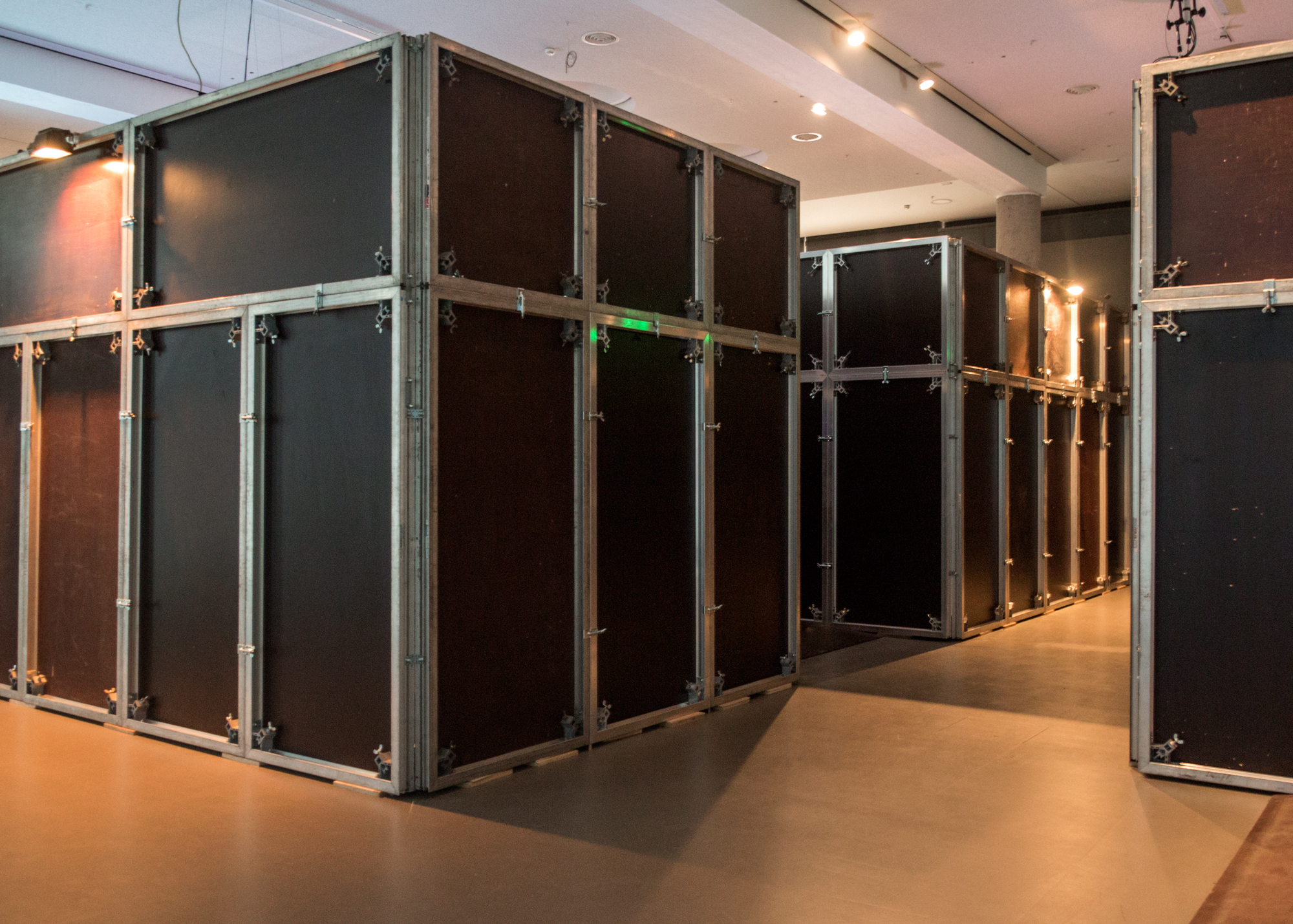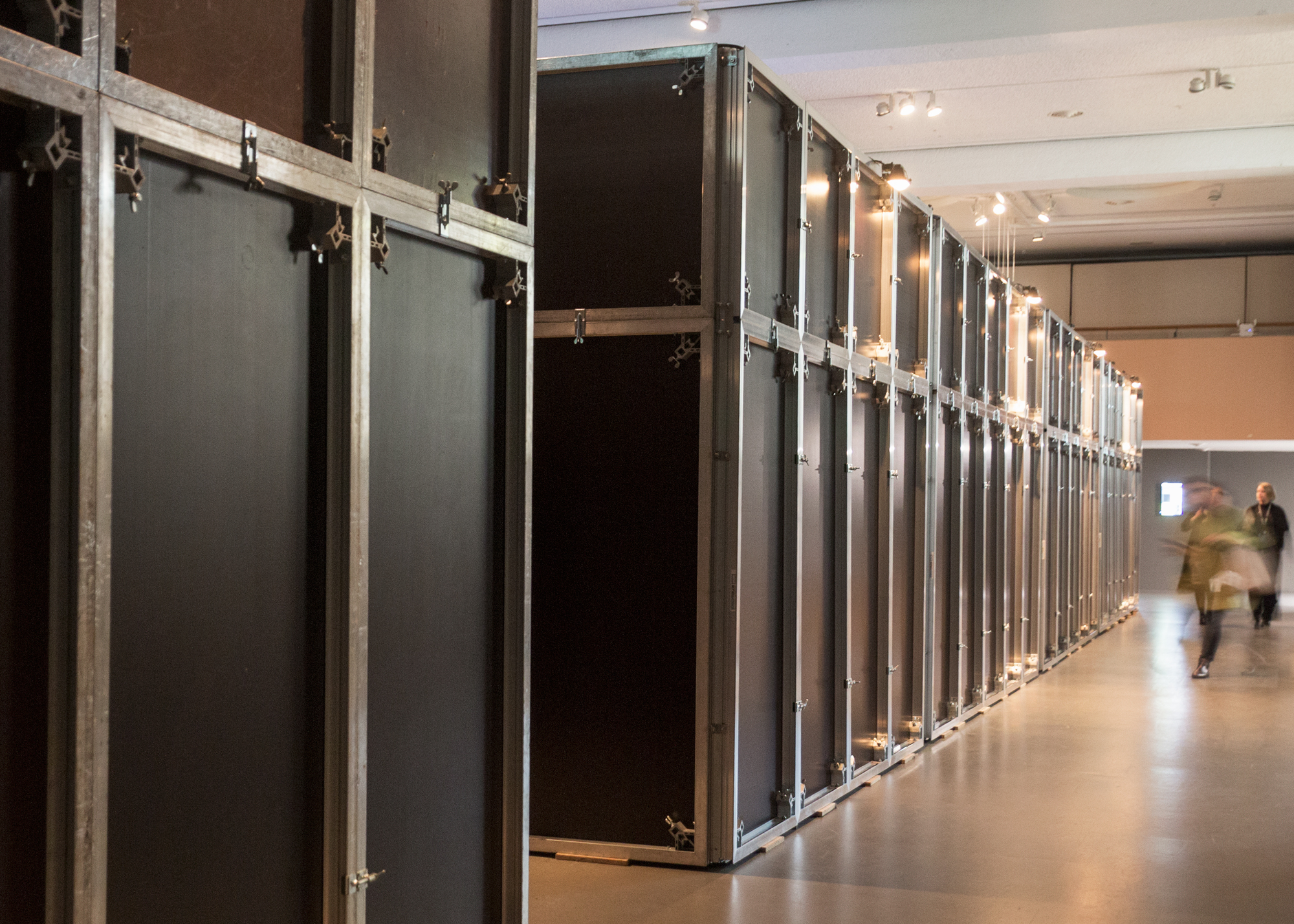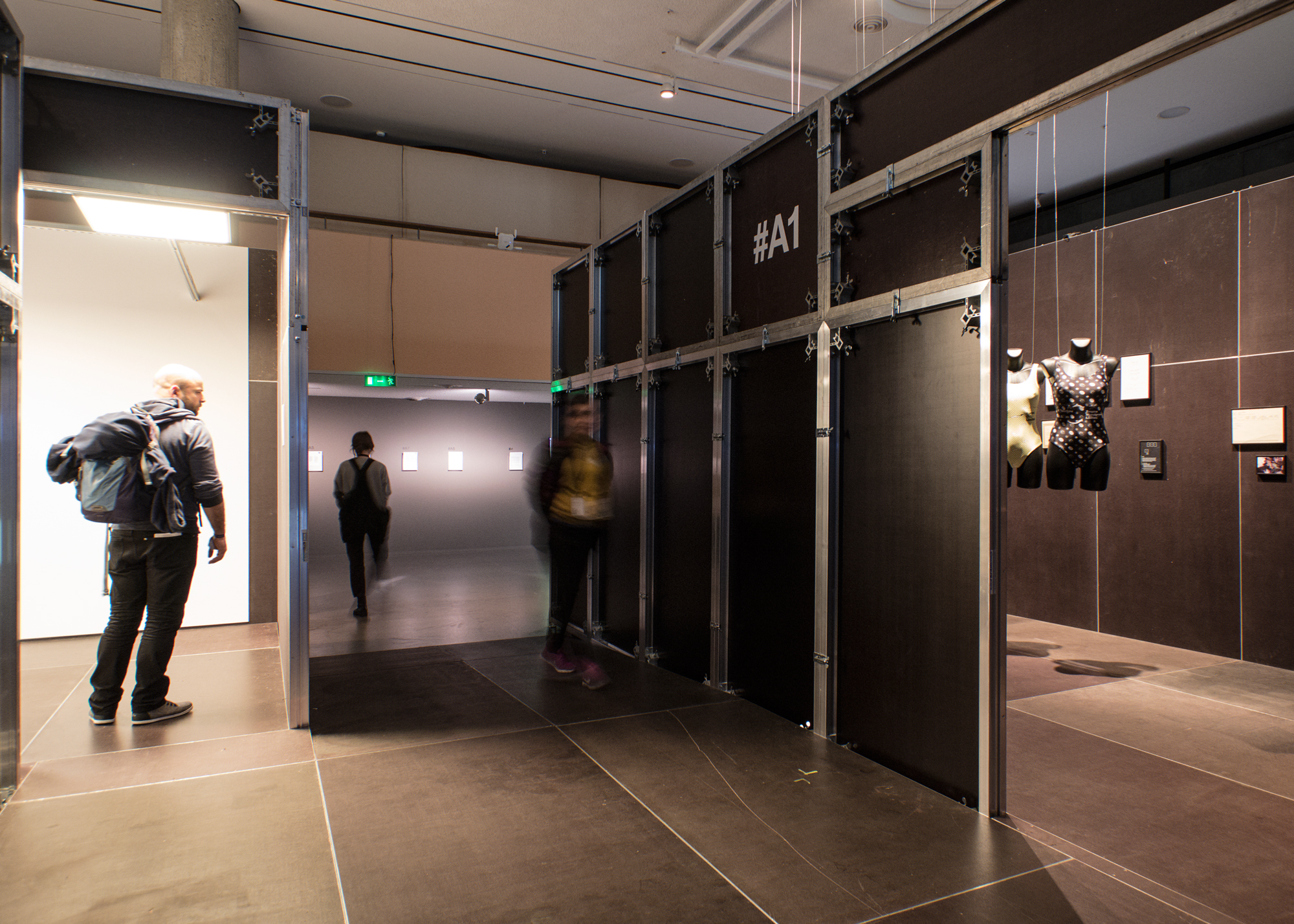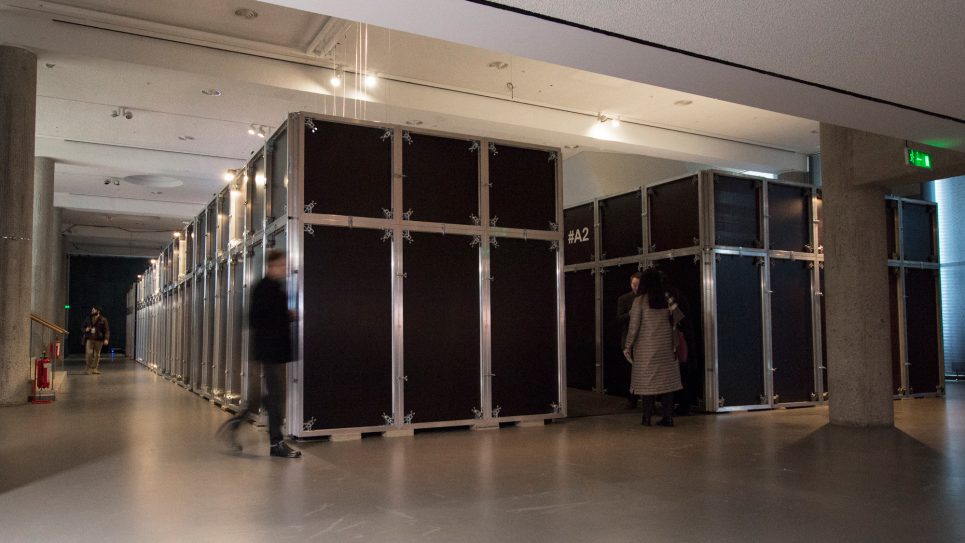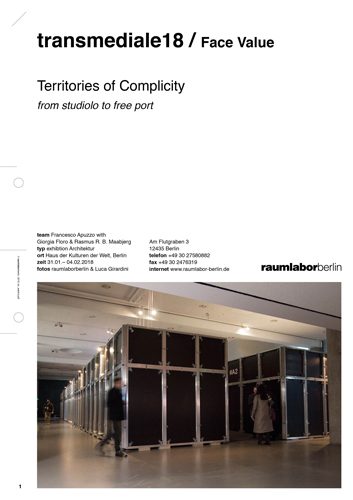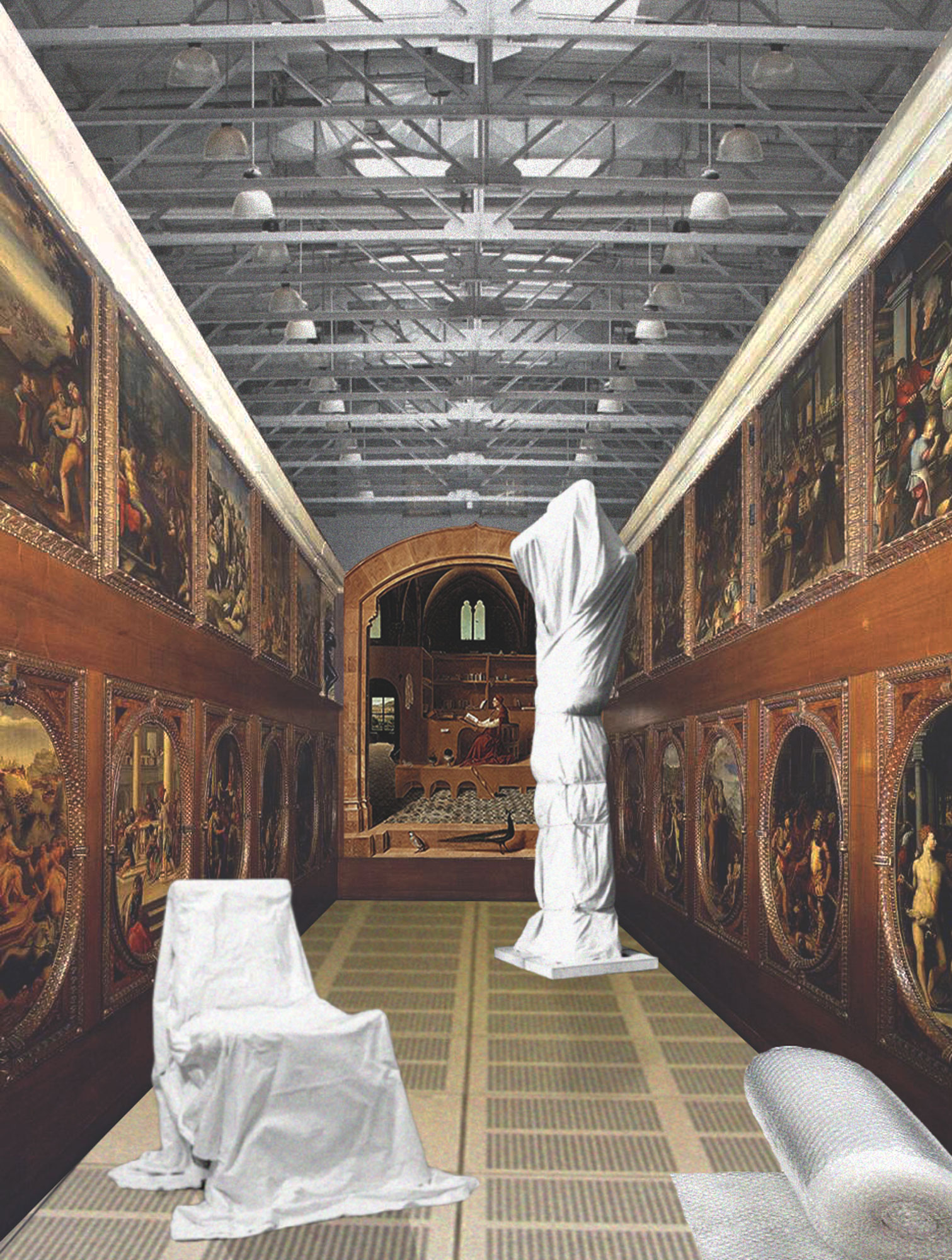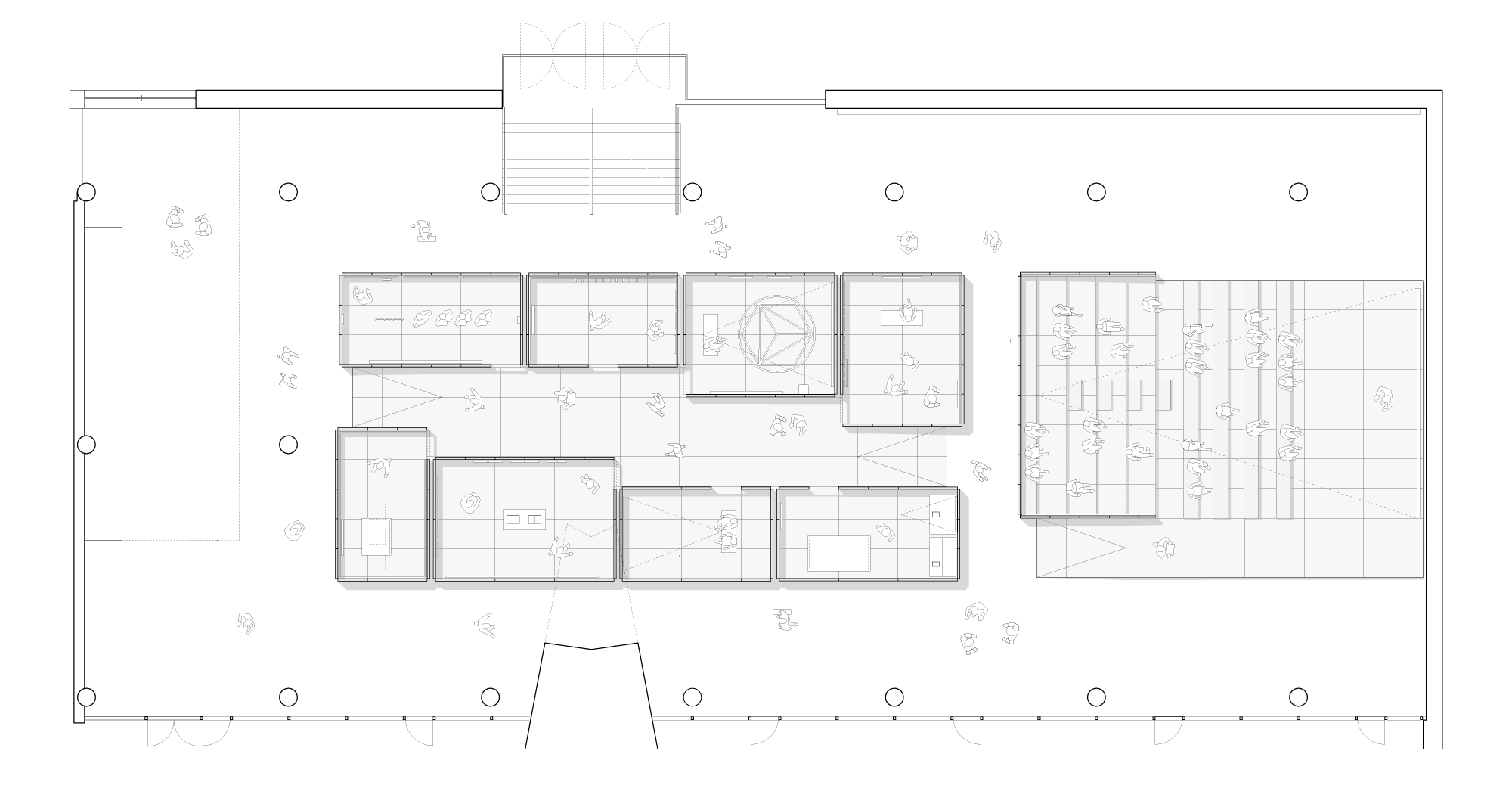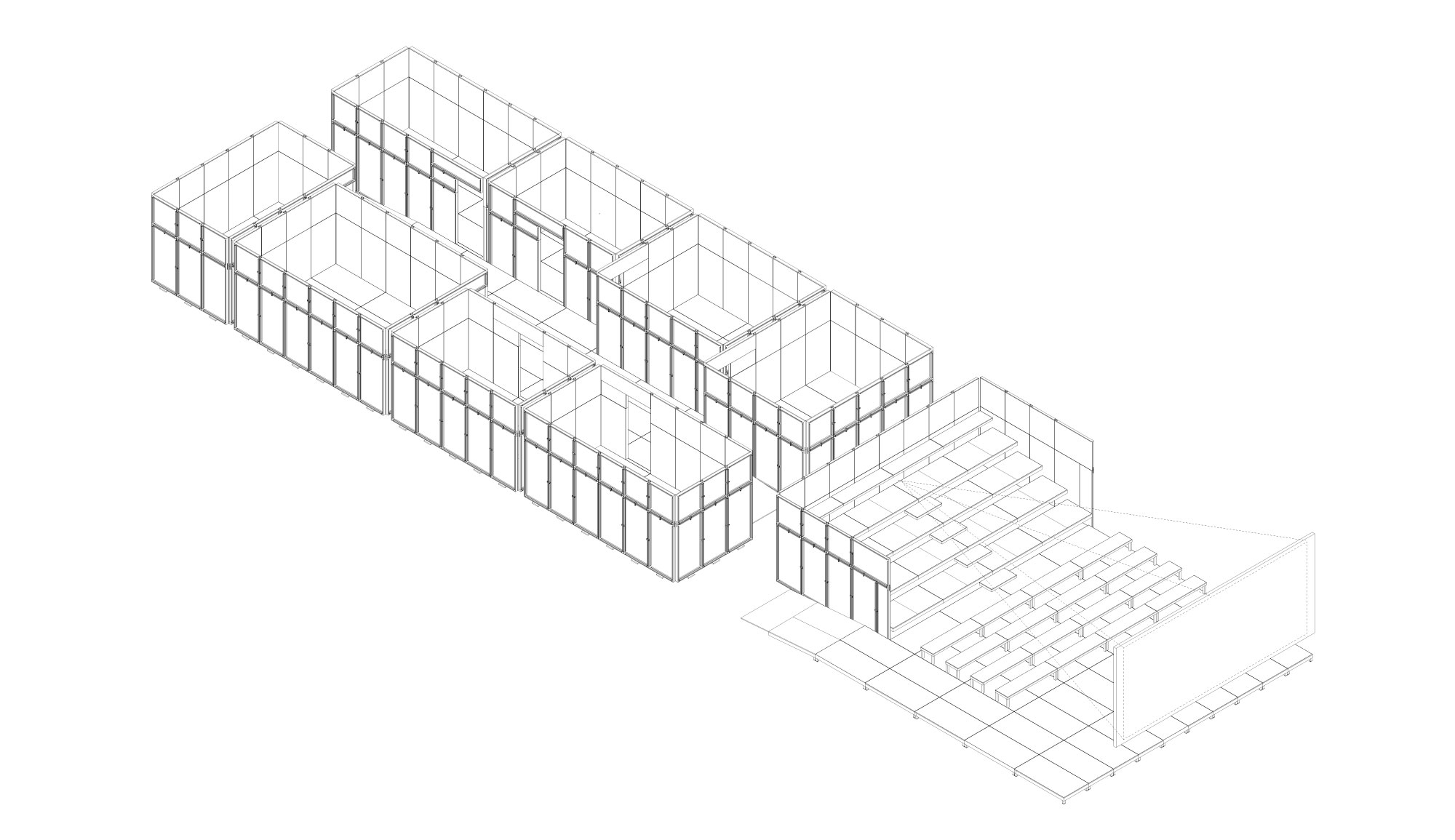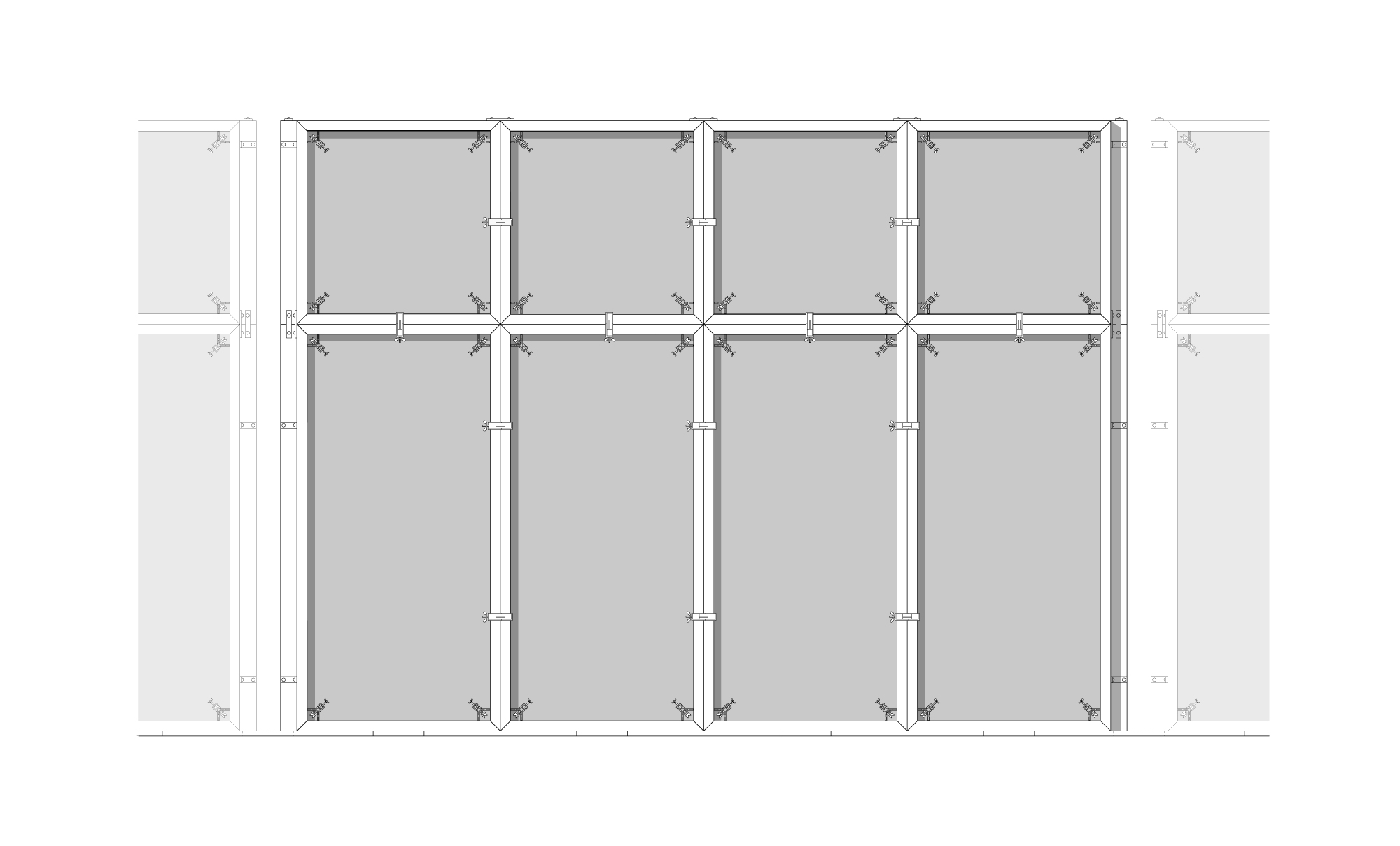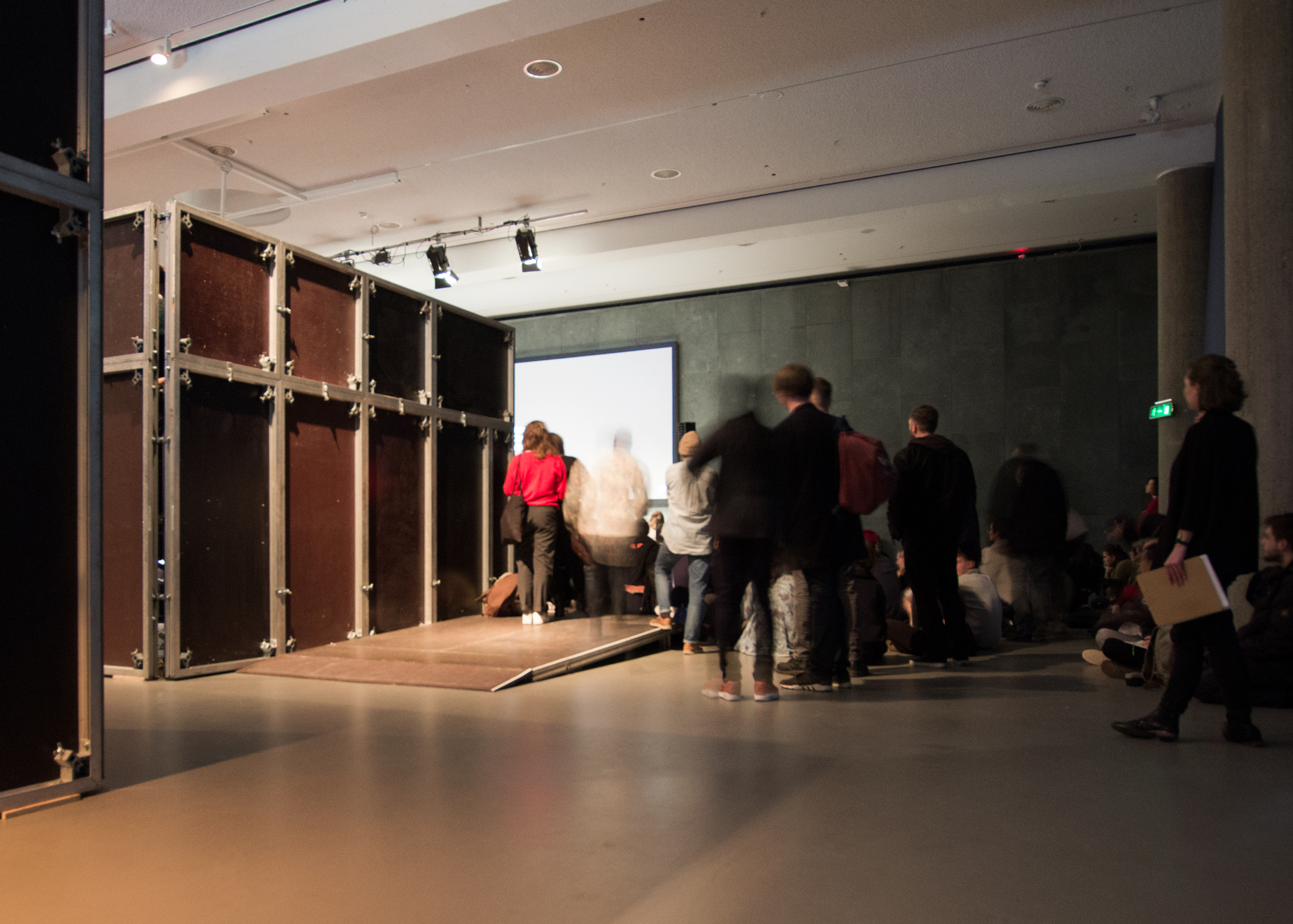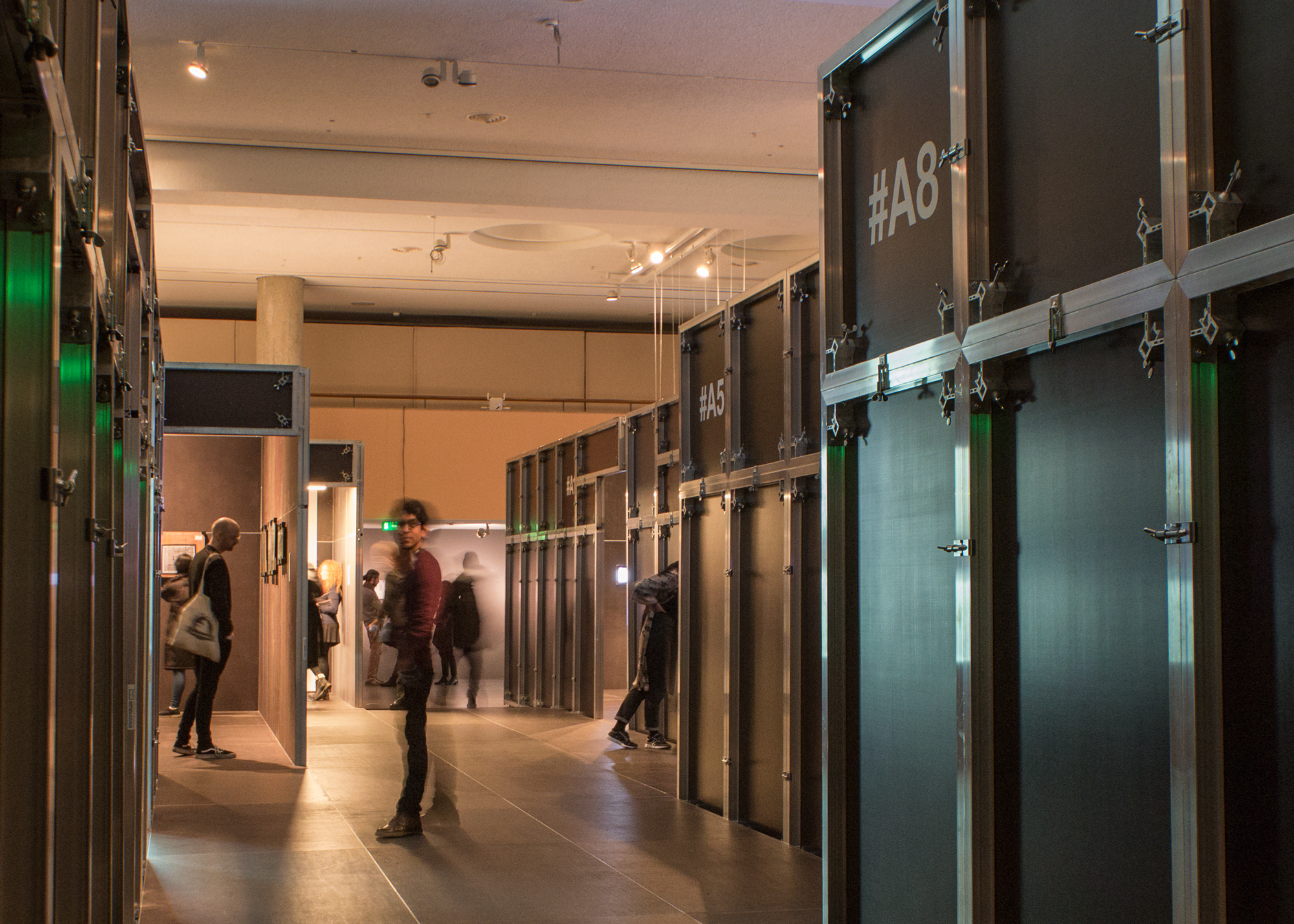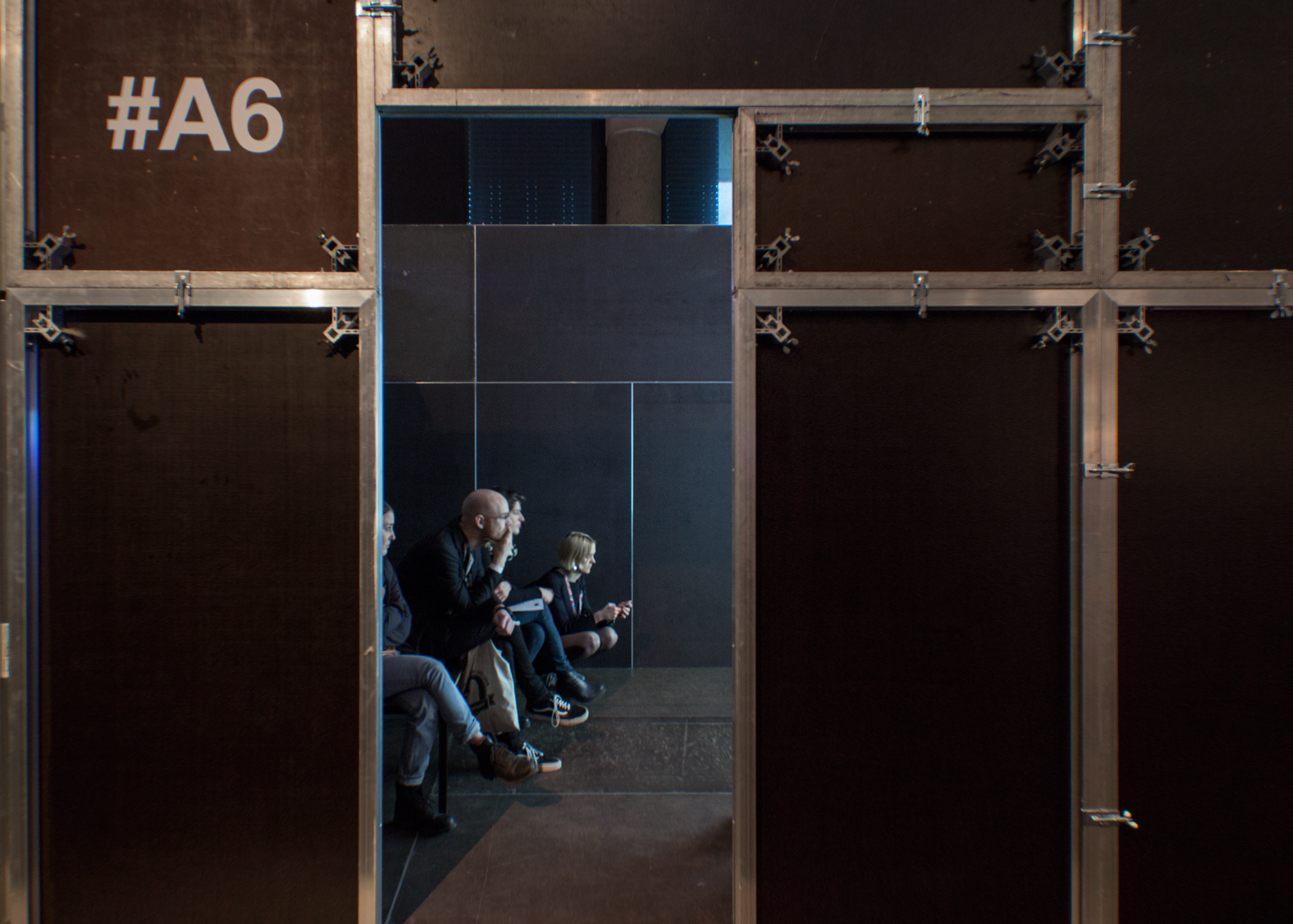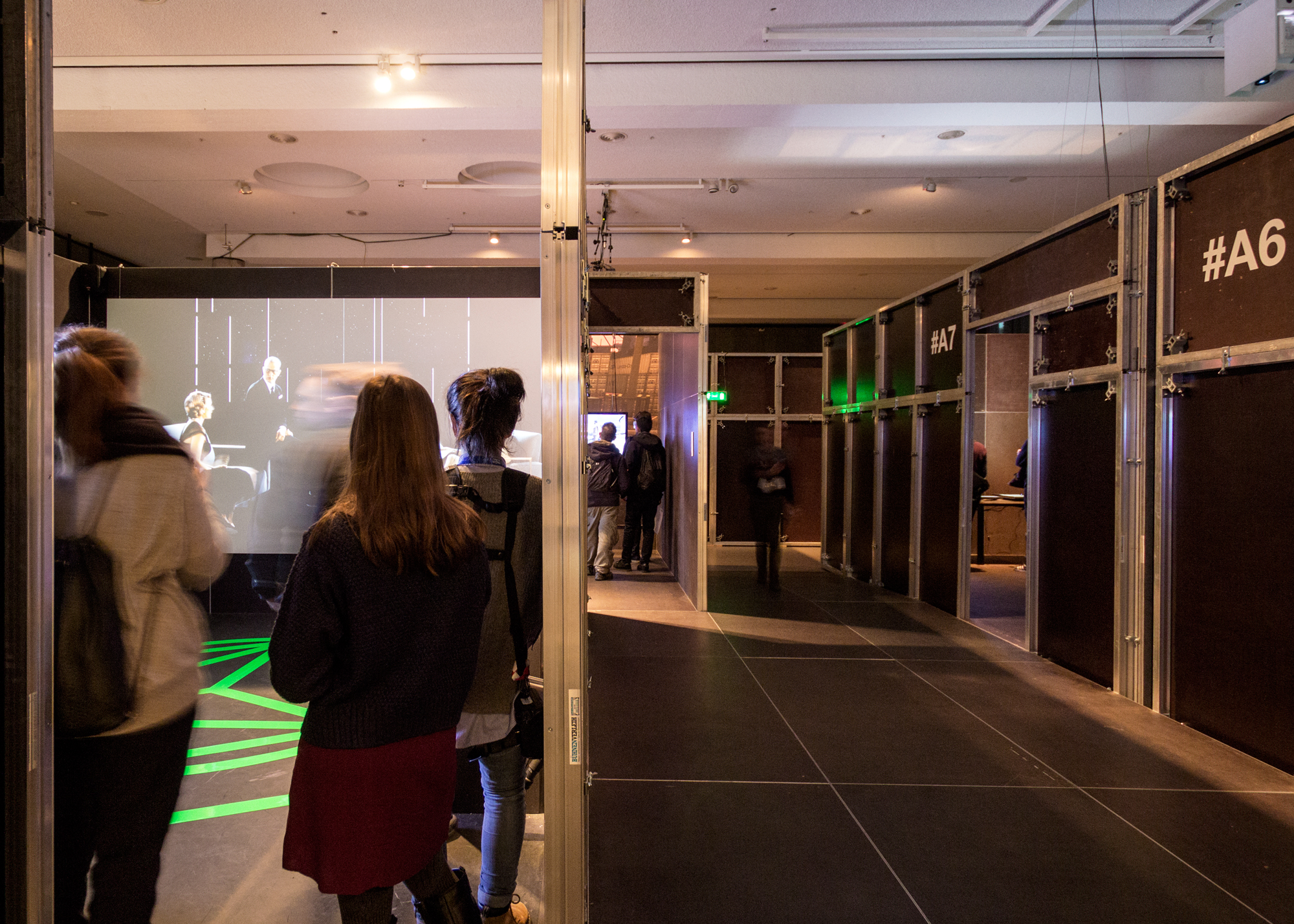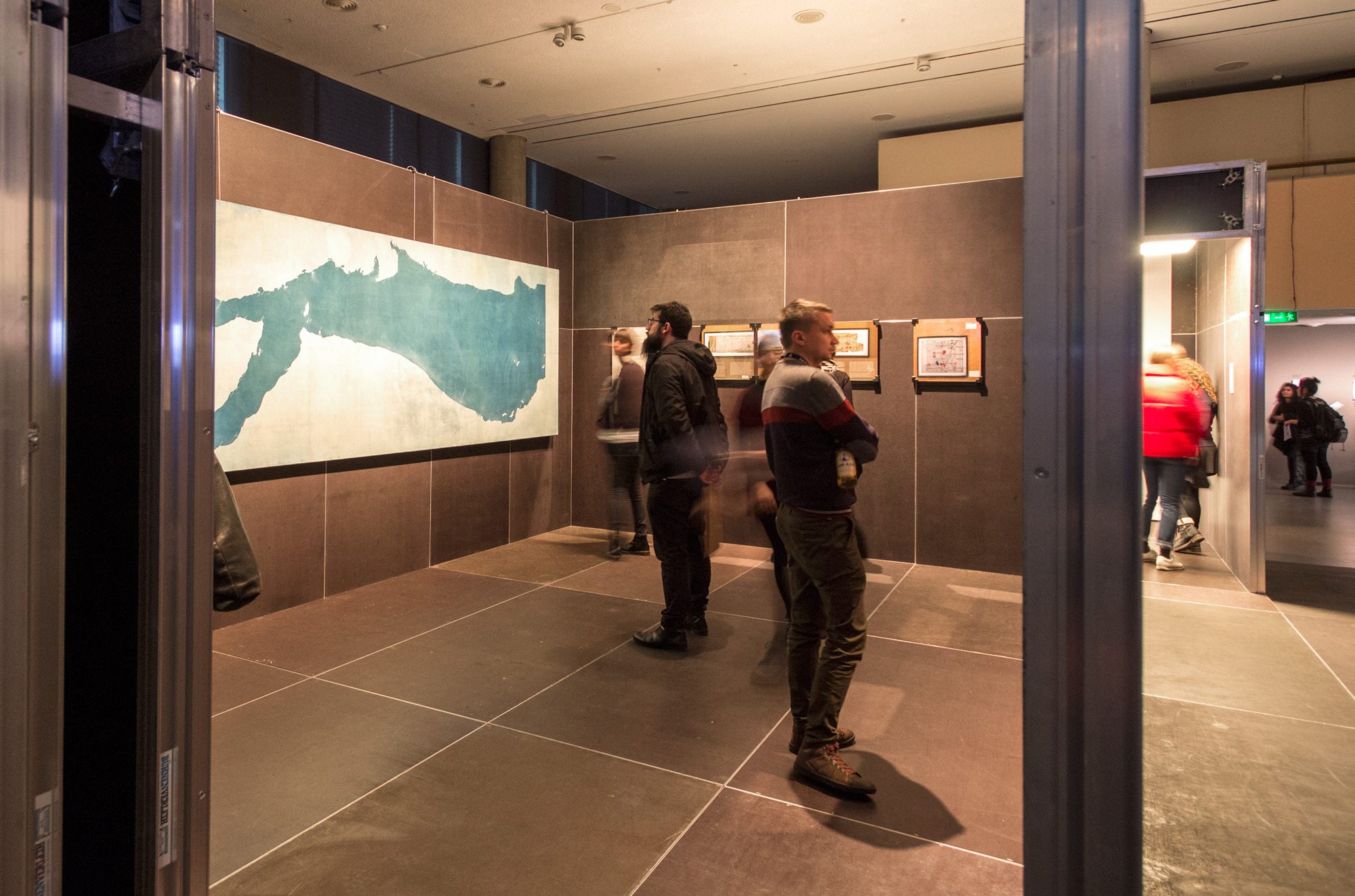TRANSMEDIALE 18 from studiolo to free port
With the exhibition architecture for Territories of Complicity, raumlaborberlin wishes to address the evolution of the physical space in which works of art have typically been collected over the centuries.
FACE VALUE / TERRITORIES OF COMPLICITY.
from studiolo to free port
In Europe, the concept of art changed with the early modern period, and with the emergence of the new class of the bourgeoisie, works of art gained new value in addition to their religious and representational purpose.
The enclosed spaces of studiolos, private study retreats in noble palaces, became the first collectors‘ rooms of the new era. In a later development as Wunderkammer and Kunstkabinette, these rooms became precursors of contemporary museums.
The encyclopaedically collected items were presented to a small audience there, demonstrating the power and culture of the owner.
Collections grew primarily with the purpose of serving scientists and researchers for their studies and over time, evolved into museums as institutions that provided a broader audience with free access to art and culture.
On the other hand, during the last centuries, objects of art have been collected more and more like goods and continually exchanged on the market where, like other assets, their economic value is always subject to change. As an asset, an investment, the artwork must be protected to preserve its value. Exhibiting it is literally seen as consumption. Transportation is always risky and even exposure to light can be harmful. Safe storage is needed and all the better if it is located in countries where transitions of goods are free of customs duties and taxes. With the Free Ports, collectors are once again reliant on the use of intimate spaces to preserve their treasures, now secluded to the degree that not even they have direct access to the artworks.
The exhibition hall of the Haus der Kulturen der Welt is invaded by a massive object. A platform, recalling a freight ship, carries eight container-like rooms where the work of eight artists is exhibited as well as a stage area for presentations and discussions.
The works of art are displayed in cabinets as the collected valuables in the Wunderkammer once were, but organised in a building that appears as a segment of an endless warehouse corridor lined with storerooms on both sides.
The construction is realized using a ready-made: the stage riser, a system based on a strongly defined grid, normally used to build horizontal surfaces for events, is in this case reinterpreted and employed vertically to create walls.
Their modularity and the hard and shiny technical appearance of the aluminium risers‘ frames testifies to the system’s origin of economic and spatial rationality and optimization, recalling the physicality of Free Port facilities.
At the same time, the brown, warm colour of the platform surfaces and the enclosed spaces are reminiscent of the intimacy of the Renaissance studiolos, characterized by wooden wall panelling and furniture.
